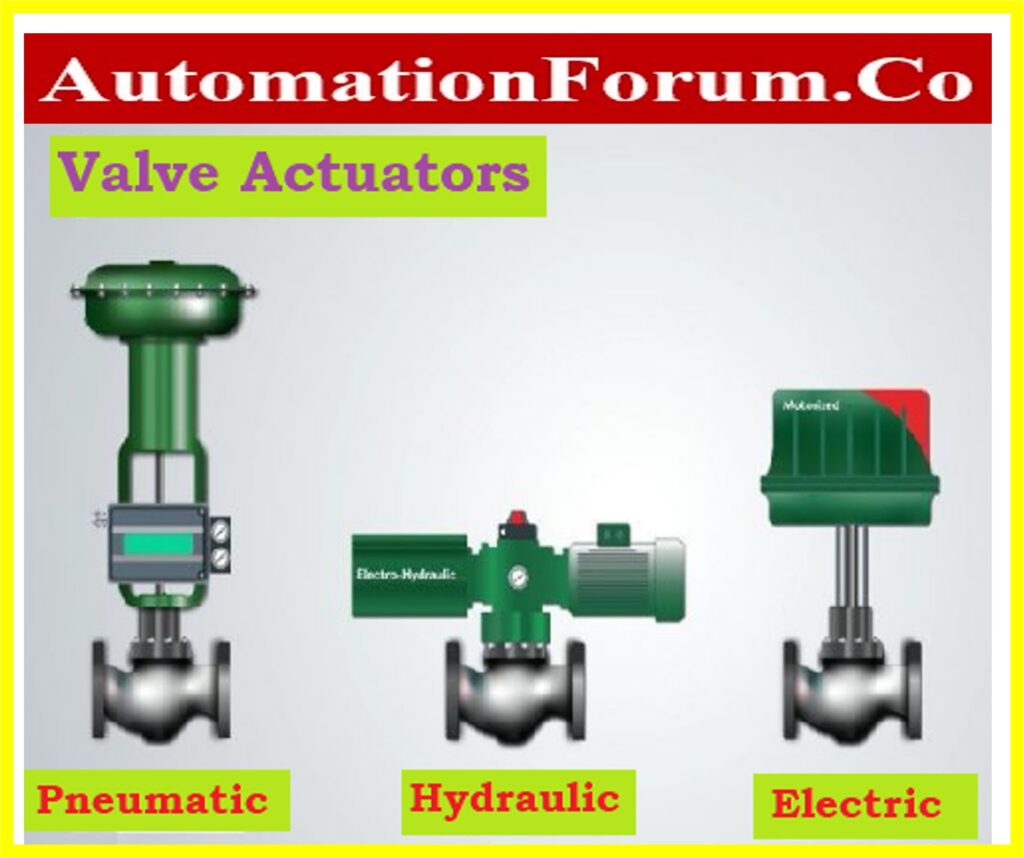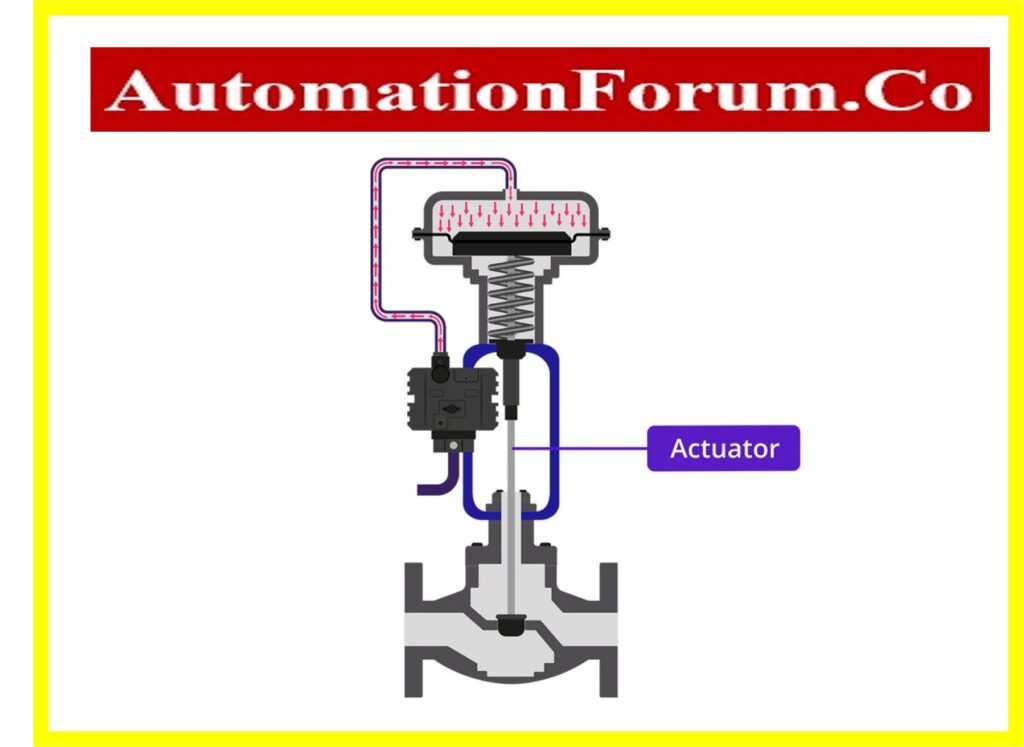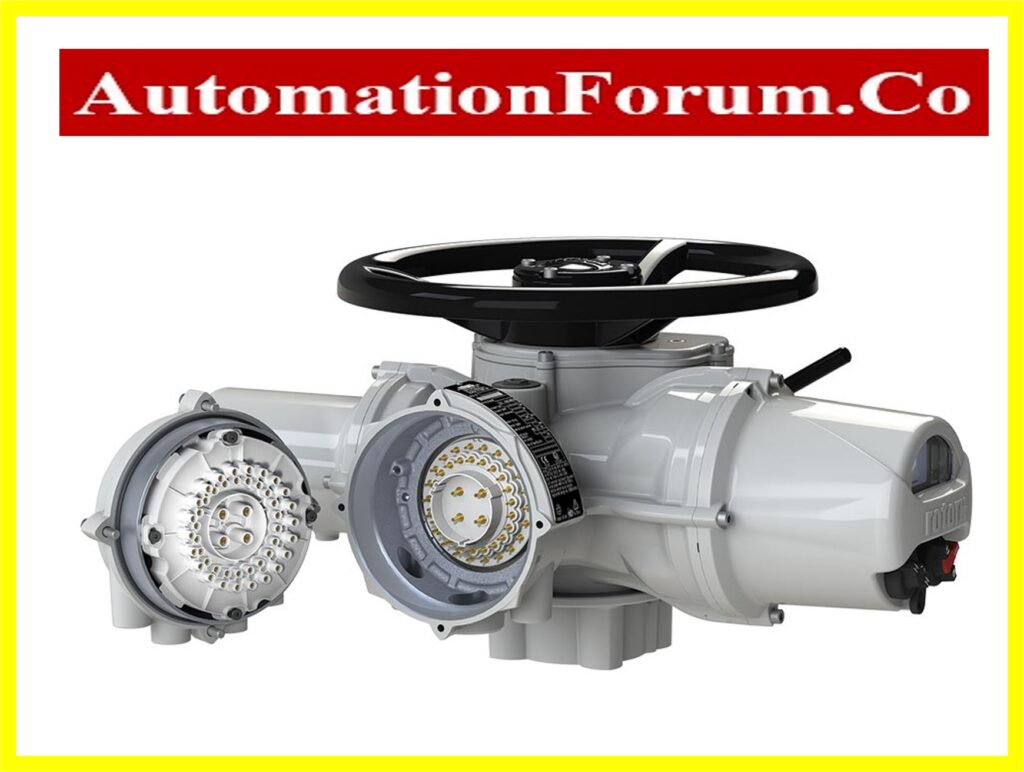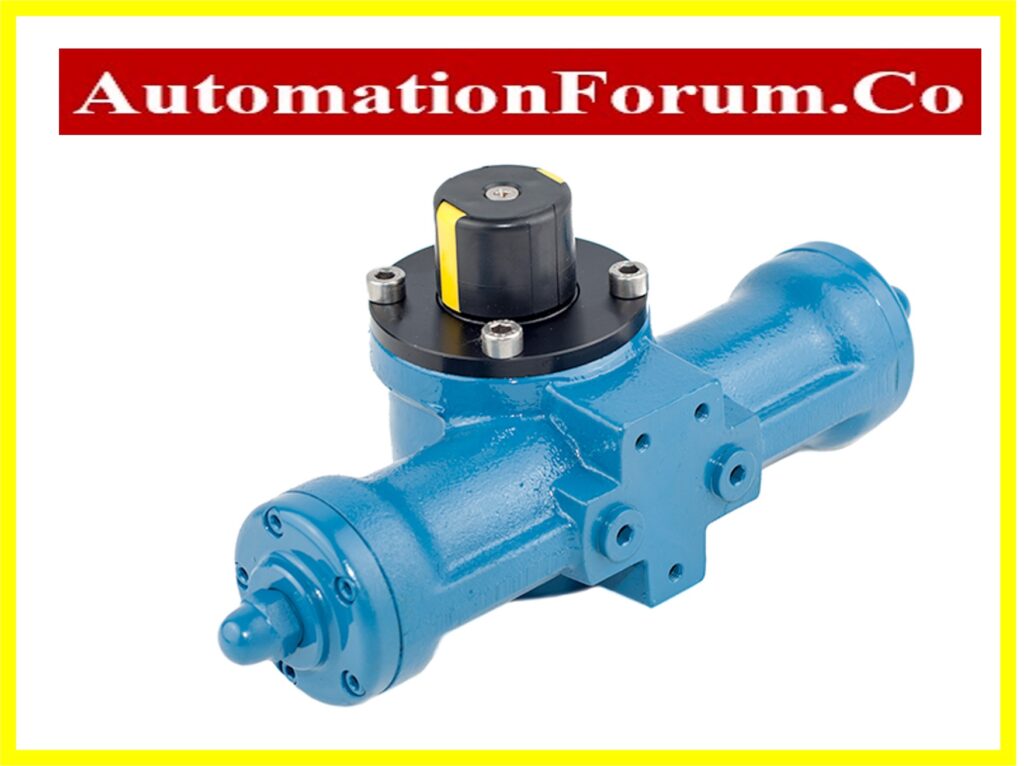- Valve Actuators
- Applications of Valve Actuators
- What are the types of Valve Actuators?
- Selection of Proper Valve Actuator
- Pneumatic Actuator
- Advantages of Pneumatic Actuators
- Dis-advantages of Pneumatic Actuators
- Electrical Actuator
- Advantages of Electrical Actuators
- Dis-advantages of Electrical Actuators
- Hydraulic Actuator
- Advantages of Hydraulic Actuator
- Dis-advantages of Hydraulic Actuator
- Functions of Valve Actuator
- What is a Three-way valve actuator?
- What are the prime components of a valve?
- What are the prime components of a valve actuator?
- What are the 3 types of actuators?
- What are the 2 categories of actuators?
- Differentiate between a valve and an actuator
- What is the common type of actuator?
- What are actuator types and functions?
- What are the 5 types of actuation methods?
- Differentiate between a pneumatic valve actuator and an electric valve actuator
- What is the difference between hydraulic and pneumatic?

Valve Actuators
Valve actuators are devices that allow valves to be positioned.
They can be used to fully open and close a valve, or modulate the position of the valve in an application that requires constant and precise control, such as regulating the fuel flow into a gas turbine or to boilers.
Applications of Valve Actuators
Various applications of valve actuators such as
- The automation of a process
- Positioning valves that require a lot of torque to work
- Systems used to protect personnel and equipment from hazardous conditions.
- Use in areas where manual control is impractical or impossible.
- Systems that must be constantly adjusted in order to maintain desired parameters
What are the types of Valve Actuators?
There are three types of automatic valve actuators:
Actuators are controlled by
- Compressed Air,
- Electricity,
- Hydraulic Force.
Selection of Proper Valve Actuator
The selection of the proper actuator is based on the following discussion
- The use of a valve
- The means by which the actuator can be powered
- The required operating speed of the valve
- The amount of force required for valve opening.
- The type of valve used for the specific application
- The cost versus benefit of each type of actuator
Pneumatic Actuator

To operate a valve, pneumatic actuators use pressurized air. They accomplish this by applying air pressure to a piston or a diaphragm attached to the valve stem.
Pneumatic actuators are the most commonly used type for automatic or semi-automatic valve operation due to their dependability and simplicity of design.
Advantages of Pneumatic Actuators
- Design dependability and simplicity
- Stroking at high speeds
- Low cost
- Low risk of fire
- When power is lost, pressurized air can be stored and used to operate the valves.
Dis-advantages of Pneumatic Actuators
- Inadequate performance at low speeds
- Air compressibility, which can result in inconsistent shaft movement speeds;
- Inability to precisely control position unless fully open or shut
Pneumatic diaphragm actuators are widely used in industrial applications due to their simple design, high reliability, and low cost. Pneumatic diaphragm actuators, for example, are frequently used in power plants to control cooling water flow.
Electrical Actuator

Electric actuators include solenoid-actuated valves and electric motors. Electric motors can be used to manually, automatically, or semi-automatically open, close, and position a valve.
A mechanical device called an electric actuator is used to transform electrical energy into motion, either in a single linear or rotational motion. It automates the damper or valve to improve the complexity and efficiency of the process.
The motor is bidirectional and drives the valve stem through gear couplings. Solenoid valves, which are used in automatic open-close applications, use electric power to attract a magnetic slug attached to the valve stem.
Advantages of Electrical Actuators
- No need for pressurized air or fluid
- Useful where low temperatures could cause condensation in air supply lines to freeze
- Capable of producing extremely high torque levels
- Capacity to produce appropriate and variable operating speeds
- Electric cables are less difficult to route to an actuator than piping.
- Extremely precise positioning and control.
- Able to stop the stroke at any moment.
- Acceleration and deceleration are simple to tune.
Dis-advantages of Electrical Actuators
- More expensive
- More complex compared to other actuator variants.
- Slower operation speeds in comparison
- Susceptible to power loss
- Potential fire hazard
- Sensitive to vibration.
- Minimal maintenance
- There is a low chance of contamination.
Hydraulic Actuator

Hydraulic actuators control valve movement by using pressurized fluid. Hydraulic fluid, which can be either water or oil, is fed to one or both sides of a piston to cause movement.
A hydraulic actuator is defined as a device that is used to convert the pressure energy of a fluid into mechanical energy. The hydraulic actuator consists of a cylinder or a fluid motor that operates mechanically using hydraulic power. The mechanical motion generates an output that can be rotational, linear, or oscillatory. In situations where it is nearly impossible to compress liquids, a hydraulic actuator will make use of a significant amount of force.
Hydraulic valves can operate automatically or semi-automatically.
Advantages of Hydraulic Actuator
- More powerful than a similar-sized pneumatic actuator
- Precise control of valve position
- Capacity to convert a minimum input pressure into a maximum output pressure value
- Fluid incompressibility, which means very little energy is lost during the operation
- The design is simple.
- Inexpensive
- Durable construction
- High-power capabilities
- Overload protection for the engine
- Overload protection for the engine
- The rotating pieces allow for easy switching between operating modes.
- The transition from a rotating movement to a reciprocating one is easy.
- These actuators produce 25 times the force of equivalent-sized pneumatic cylinders.
Dis-advantages of Hydraulic Actuator
- A separate hydraulic pump is required.
- Temperature changes can have an impact on efficiency.
- More costly and complicated than pneumatic actuators
- Can cause a fire hazard if it leaks.
- Compared to others, it is less effective.
- Its primary qualities will be impacted by its operational circumstances.
- In order to reduce noise, they require a number of complementing components, including a liquid reservoir, pump, motor, heat exchangers, and release valves.
- Loss of fluids can result in decreased effectiveness and hygienic issues, which may cause harm to nearby objects and structures.
- Needs constant monitoring
Hydraulic actuators are frequently used to operate high-pressure steam turbine piping’s main stop and control valves. Hydraulic actuators are well suited for this task due to their ability to operate the valve against high-pressure steam and to quickly close the valve if control oil is lost.
Functions of Valve Actuator
Adjust the closure mechanism like a ball, disc, or plug. Valve actuators must have sufficient torque or thrust for the movement of the closure mechanism in both Normal and critical environments.
Maintain the valve closed in the directed position. Actuators must have the necessary spring, fluid power, or mechanical stiffness to keep the valve closed even when throttling fluids provide excessive torque against it.
Make sure the valve is properly seated. Butterfly valves, for example, are considered properly seated when their disc is positioned in the resilient seat or liner.
Include a sound failure mode. Valve actuators must be equipped to fully open, close, or remain as-is in the event of a disaster or system failure, depending on the application.
Capable of rotating the required rotation. The majority of valves require either 90 or 180 degrees of rotation. Knowing the required rotational travel for use will help you choose the right valve actuator.
Able to operate at the required speed. The cycle speed is used to control the valve actuator.
Frequently asked Questions:
What is a Three-way valve actuator?
A Three-way control valve halts the flow of water in one pipe while allowing it to flow in another. The valve can also mix water from two different pipes into one pipe or divert water from one pipe into two different pipes in a modulating or three-point floating application.
What are the prime components of a valve?
All valves, regardless of type, have the following basic components: the body, bonnet, trim (internal elements), actuator, and packing.
What are the prime components of a valve actuator?
These actuator valves typically consist of an adjustable screw, breather plug, bonnet, spring, diaphragm assembly, and stem.
What are the 3 types of actuators?
Actuators are classified into three types: pneumatic (air pressure), hydraulic (fluid pressure), and electric.
- Pneumatic Actuators.
- Hydraulic Actuators.
- Electric Actuators
What are the 2 categories of actuators?
Actuators can generate two kinds of motion: linear and rotary.
Actuators linear: Linear valve actuators convert electric, pneumatic, and hydraulic energy into a push-pull or linear movement.
Rotating actuators: Rotary actuators rotate in a circle.
Differentiate between a valve and an actuator
A valve is a physical component of a system that opens and closes to control the amount of fluid allowed to pass through, whereas the actuator controls when the valve operates.
What is the common type of actuator?
The most common type of actuator is one that can convert electrical energy from DC or AC to mechanical energy. Electrical actuators are popular in many industries and for things like multi-turn valves because they are a clean and easily accessible technology.
What are actuator types and functions?
A mechanical actuator performs movement by converting one type of motion, such as rotary motion, into another type of motion, such as linear motion. A rack and pinion is an example. Mechanical actuators operate by combining structural components such as gears and rails or pulleys and chains.
What are the 5 types of actuation methods?
Valves can be operated in five ways: manually, mechanically, electrically, hydraulically, or pneumatically. In machine applications, any of these methods, or a combination of them, can be used to achieve the best control.
Differentiate between a pneumatic valve actuator and an electric valve actuator
An electric actuator is one that uses electrical energy to generate mechanical energy. A pneumatic actuator, on the other hand, is an air-operated actuator that converts air pressure into mechanical force to operate the valve.
What is the difference between hydraulic and pneumatic?
Pneumatics generates fluid power by using pressurized air or gases. Hydraulics generates fluid power by using pressurized liquids like oil or water. Cost-effectiveness, materials to be moved, availability of resources, and space are all factors to consider when deciding between the two.





